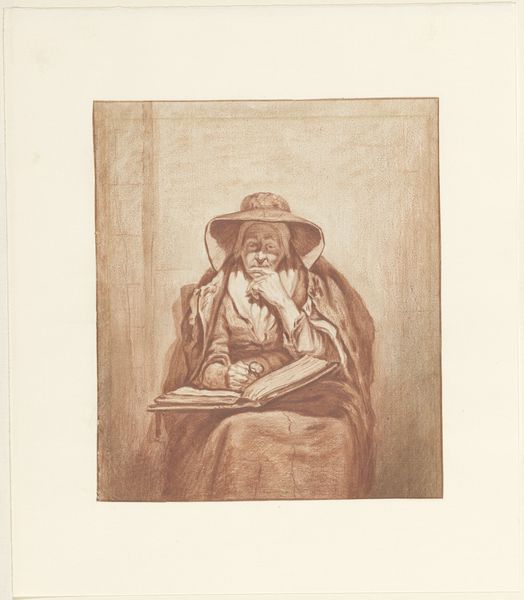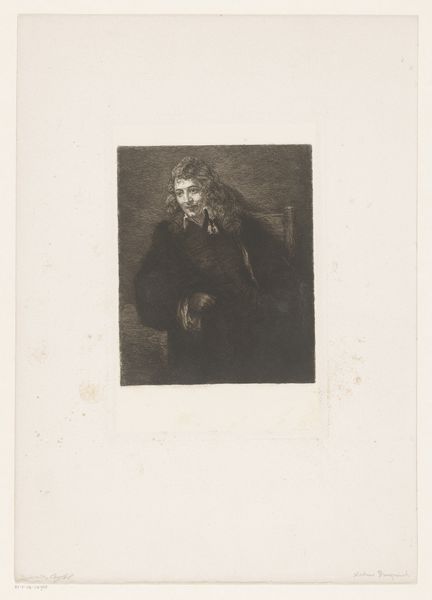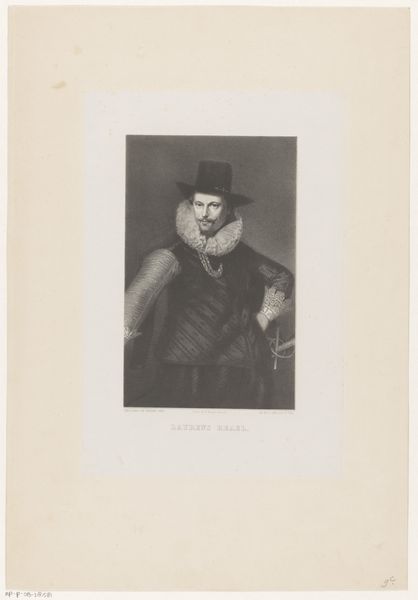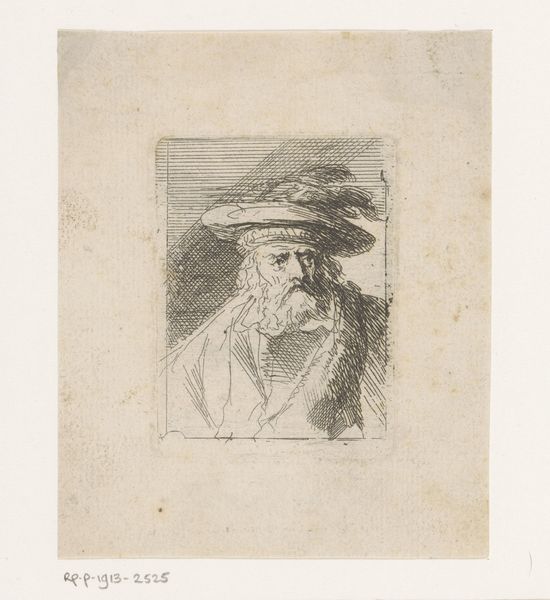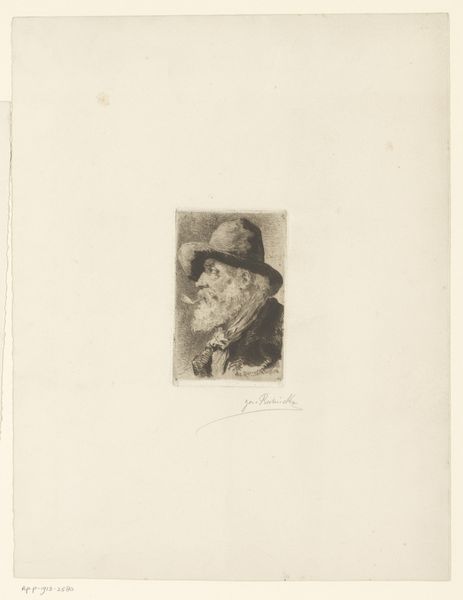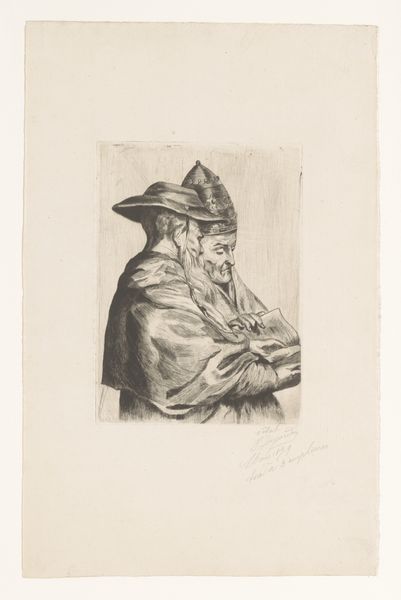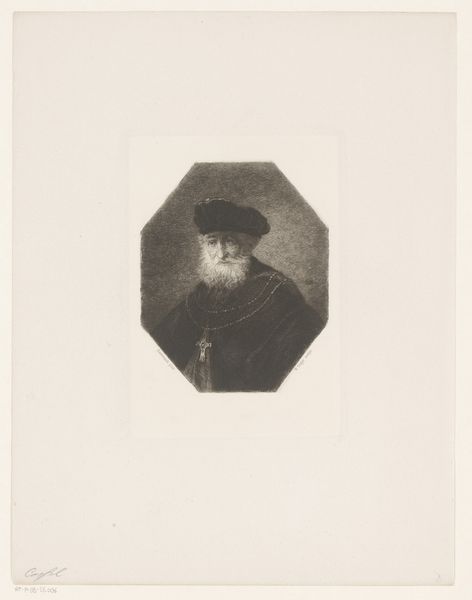
print, etching
#
portrait
#
print photography
#
photo of handprinted image
# print
#
etching
#
figuration
#
history-painting
#
academic-art
Dimensions: height 237 mm, width 167 mm
Copyright: Rijks Museum: Open Domain
Léopold Flameng made this print of a rabbi using a metal plate, acid, and ink. The etching process allows for detailed lines and tonal variations, crucial for capturing the textures of the rabbi's beard and clothing. The making of an etching involves covering a metal plate with a waxy, acid-resistant ground. The artist then scratches an image into the ground, exposing the metal. When the plate is immersed in acid, the exposed lines are etched, creating grooves that hold ink. Flameng was a master of this technique, evident in the fine lines and intricate details. The depth and darkness of the lines indicate the amount of time the plate spent in the acid bath. The etching process also democratized art production in the 19th century, and it made images more accessible to a wider audience, a kind of mass production. Ultimately, understanding the labor and skill that went into creating this etching enriches our appreciation. It reminds us that every print is the result of a complex interplay between the artist's hand, the materials they use, and the social context in which they work.
Comments
No comments
Be the first to comment and join the conversation on the ultimate creative platform.
